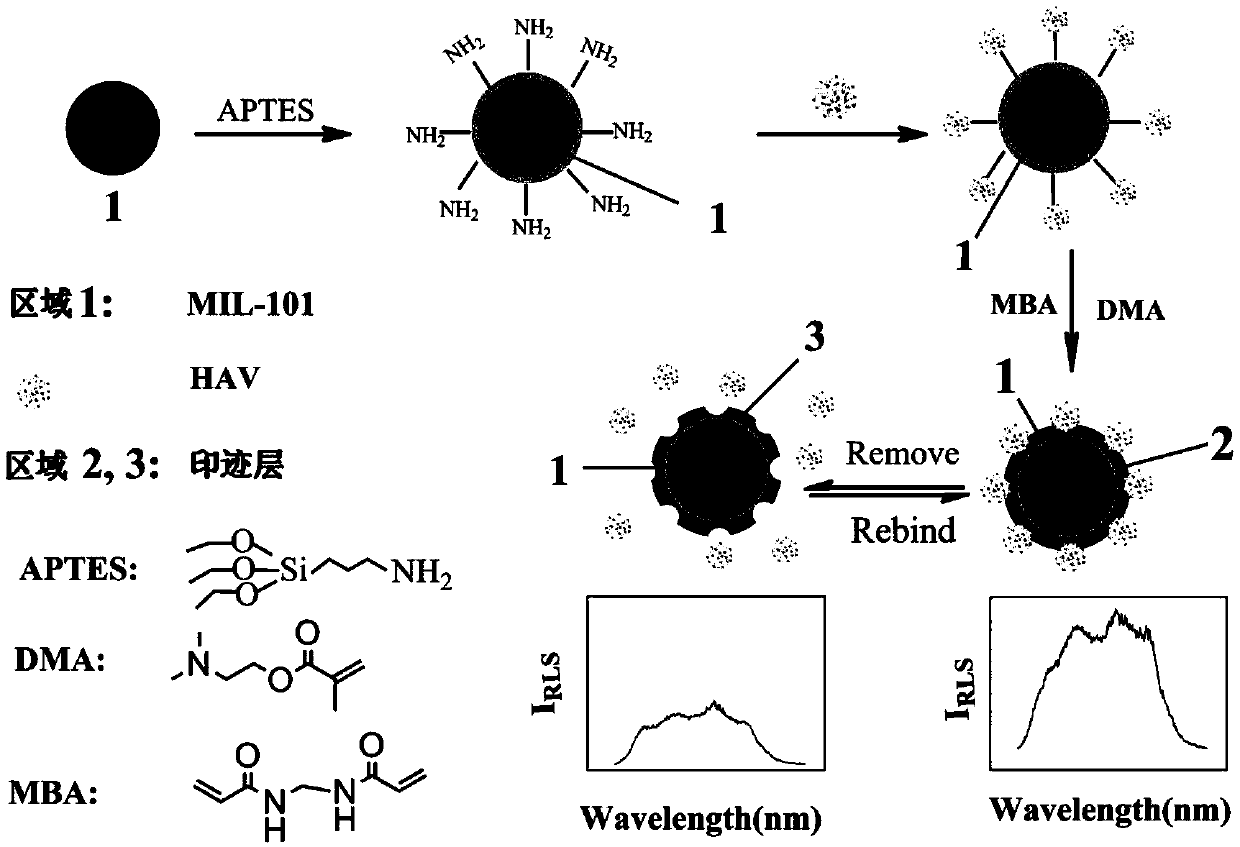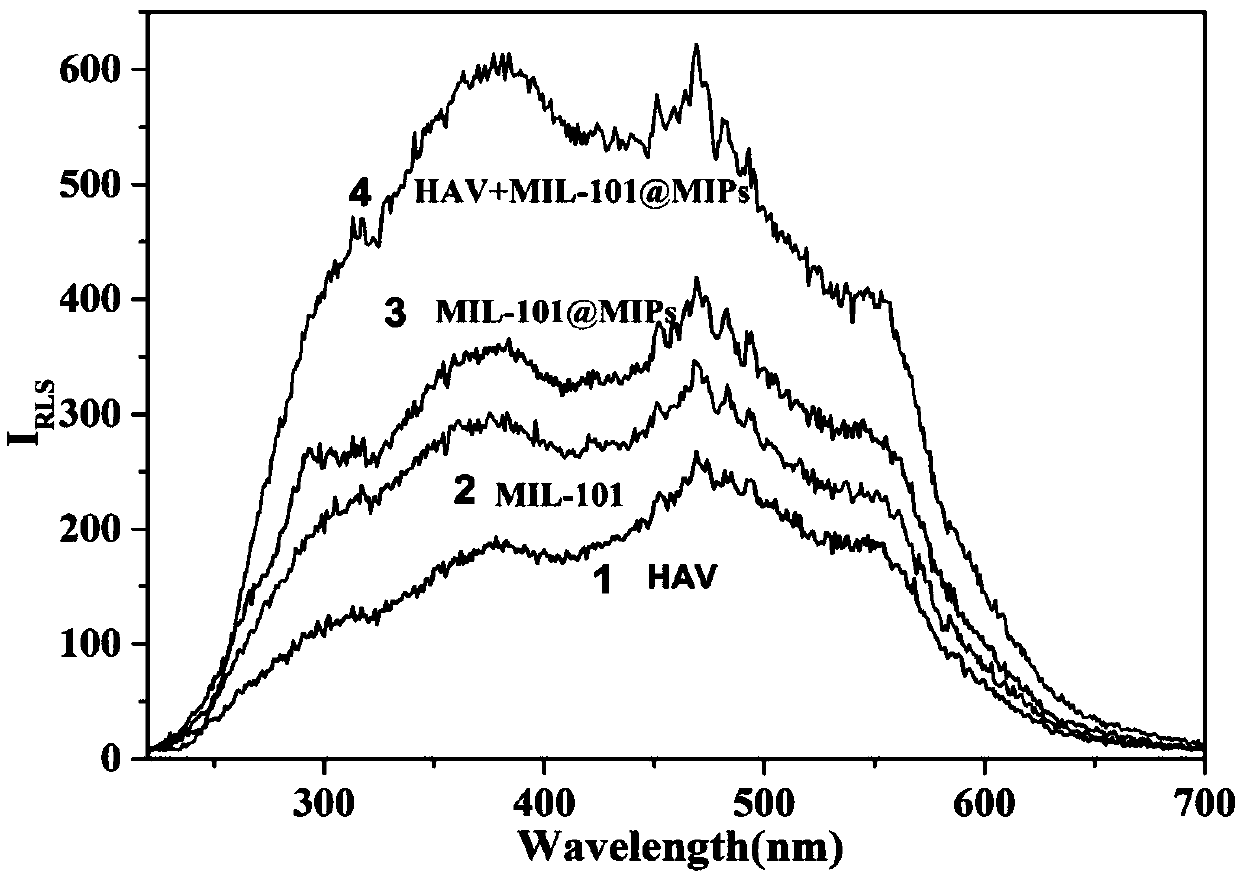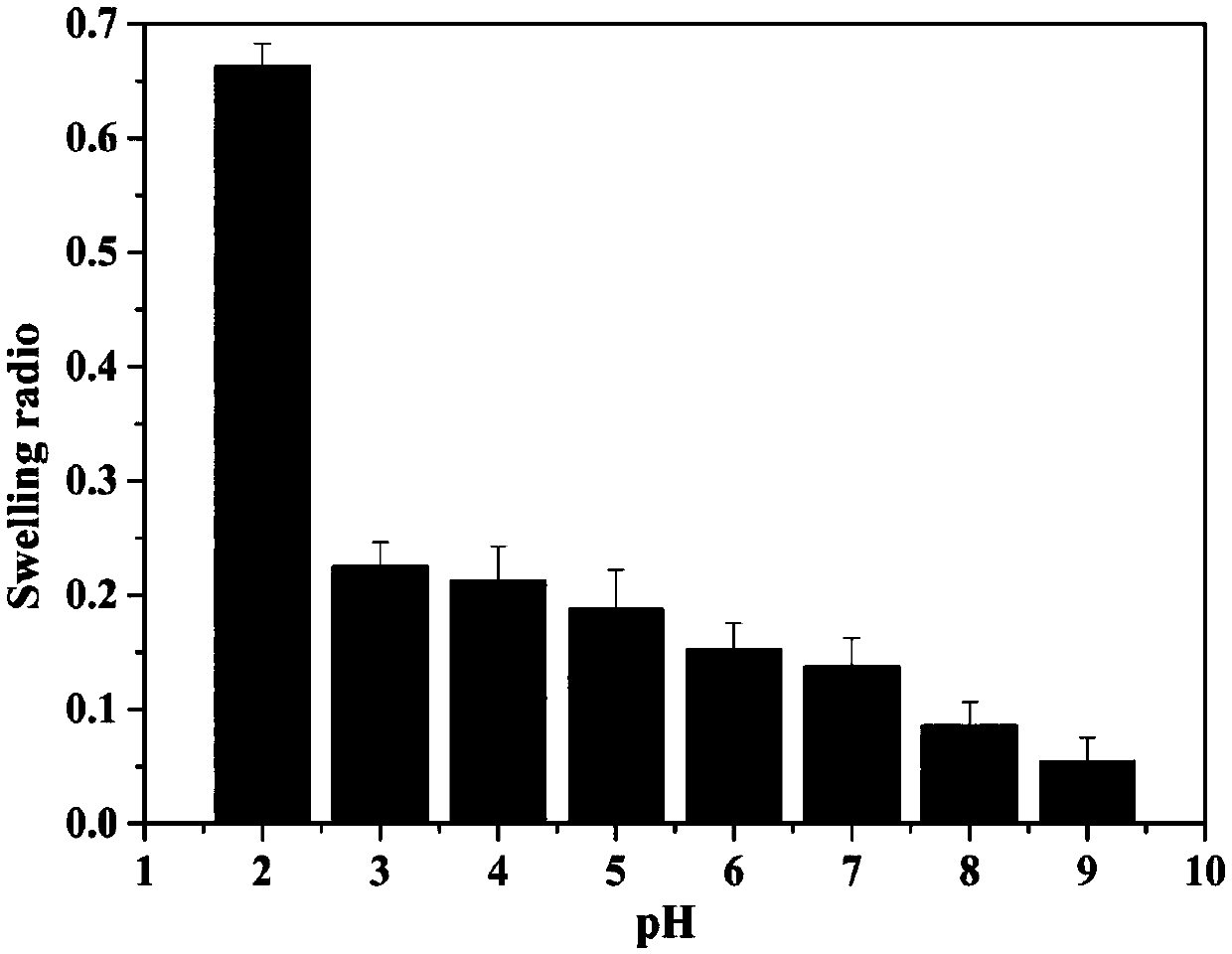Preparation and application of intelligent virus molecular imprinting resonance light sensor based on metal organic framework
A metal-organic framework and molecular imprinting technology, applied in the field of analytical chemical detection, can solve the problems of complexity and difficulty in elution and recombination of template virus molecules, achieving a simple construction process, conducive to preservation and long-term use, and low professional requirements. Effect
- Summary
- Abstract
- Description
- Claims
- Application Information
AI Technical Summary
Problems solved by technology
Method used
Image
Examples
Embodiment 1
[0030] Example 1: A preparation method of an intelligent virus molecularly imprinted resonance photosensor based on metal organic framework
[0031] (1) Preparation of metal-organic framework MIL-101: Cr(NO 3 ) 3 9H 2 O (2.00g), terephthalic acid (TPA, 0.82g) was added to 25mL of sodium acetate aqueous solution with a concentration of 0.05mol / L, and after magnetic stirring for 30min, the solution was transferred to a 50.0mL polytetrafluoroethylene reactor. Then the reaction kettle was sealed and placed in a constant temperature blast drying oven at 200°C. After 12 hours, the reactor was taken out, and after cooling to room temperature, the sample was fully washed with ultrapure water and filtered, and then dried in a constant temperature drying oven at 50°C for 5 hours to obtain dark green crystal MIL-101. Afterwards, add 0.2g MIL-101 and 10mL absolute ethanol to the plastic centrifuge tube, seal the whole system and place it in a water bath at 60°C, add 15mL of NH with a c...
Embodiment 2
[0034] Example 2: Verification of the feasibility of detecting viruses by the MIL-101@MIPs resonant light sensor
[0035] In order to verify the practicability of the present invention, this embodiment verifies the construction principle of the sensor. Such as figure 2 As shown, the comparison of the resonance light intensity at 470nm is: HAV+MIL-101@MIPs>MIL-101@MIPs>MIL-101>HAV. This shows that the MIL-101@MIPs sensor described in the present invention can well adsorb HAV particles, thereby causing a change in the particle size of the entire sensor, so that the resonant light scattering intensity is significantly enhanced.
Embodiment 3
[0036] Example 3: Characterization of the performance, morphology and structure of the MIL-101@MIPs resonant photosensor and intermediate products.
[0037] To verify the pH response performance of the MIL-101@MIPs sensor, we investigated the effect of different pH values on the swelling rate of MIL-101@MIPs particles ( image 3 ): When the pH of the solution decreases from 9.0 to 2.0, the SR value increases slowly, which is due to the fact that the reagents forming the imprinted layer are cationic, and when the pH decreases, the polymer becomes more hydrophilic, which causes the polymer layer to swell .
[0038] Thermogravimetric experiments were used to evaluate the thermal stability of the MIL-101@MIPs resonant photosensor ( Figure 4 ). Such as Figure 4 It is shown that when the temperature is 50-100°C, the weight of the imprinted polymer decreases by 20.01%, obviously, this is caused by the disappearance of water molecules in its structure. While the weight loss in...
PUM
 Login to View More
Login to View More Abstract
Description
Claims
Application Information
 Login to View More
Login to View More - R&D
- Intellectual Property
- Life Sciences
- Materials
- Tech Scout
- Unparalleled Data Quality
- Higher Quality Content
- 60% Fewer Hallucinations
Browse by: Latest US Patents, China's latest patents, Technical Efficacy Thesaurus, Application Domain, Technology Topic, Popular Technical Reports.
© 2025 PatSnap. All rights reserved.Legal|Privacy policy|Modern Slavery Act Transparency Statement|Sitemap|About US| Contact US: help@patsnap.com



